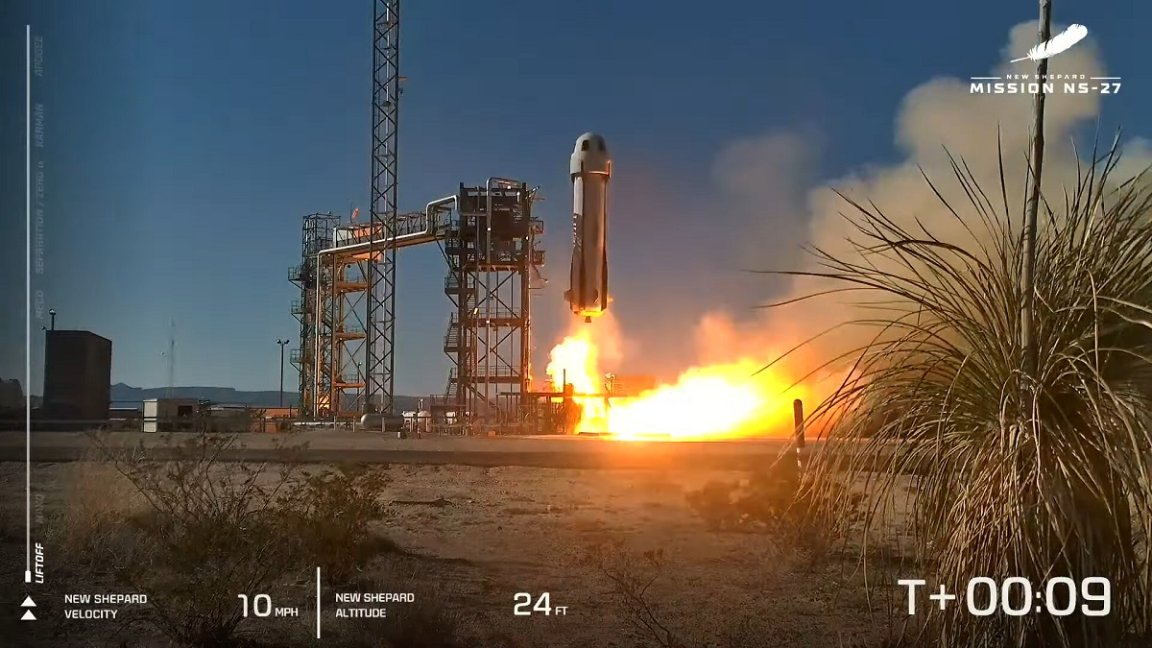
Mum’s the Word
After some minor setbacks, Blue Origin finally launched its latest model of a New Shepard spacecraft on Wednesday.
The mission, NS-27, lifted off around 11:30 AM in West Texas, marking the debut flight of the second New Shepard vehicle designed to carry human passengers high off the Earth but not into orbit, though for this test it was uncrewed.
Blue Origin, however, has been uncharacteristically stingy with some of the details surrounding the launch. As SpaceNews reports, the Jeff Bezos-owned company didn’t release flight statistics to the public as it normally does.
Furthermore, the vehicle appeared to have reached an altitude nearly two miles short of what it typically achieves, based on the launch’s livestream. Blue Origin confirmed to SpaceNews that the spacecraft’s capsule hit an altitudinal peak of 63.6 miles — whereas a previous flight reached 65.4 miles.
This was apparently close enough to the mark for Blue Origin, which refrained from explaining why New Shepard flew lower than usual. “Flight performance was nominal and on target for this shakeout mission,” a spokesperson told SpaceNews.
Flying Colors
The latest New Shepard model comprises a first stage rocket called Booster 5 and Blue Origin’s new crew capsule, RSS Kármán Line, which saw its first flight with this mission. In a statement, the company claims that Kármán Line — named after a commonly agreed-upon boundary between the Earth’s atmosphere and space — will have improved performance and reusability over its predecessor, which has carried out eight crewed missions to date.
Originally, the new model was supposed to launch on October 7, but was postponed due to a technical issue. A new attempt a week later was scrubbed again because of a GPS error.
During this flight test, the rocket-capsule stack separated about four minutes after liftoff. The booster then guided itself back to the launch site and performed a controlled landing.
Several minutes later, the capsule followed by parachuting down to an open stretch of desert.
Loaded Up
Along with demonstrating the vehicle’s flight capabilities, the NS-27 mission also carried a dozen payloads, five of which were on the booster, and seven inside the crew capsule.
Largely for research purposes, these contained new navigation systems for New Shepard and its bigger cousin, the heavy-lift rocket New Glenn, along with light detection and ranging sensors to be used in future lunar missions, Blue Origin said.
All told, the test continues Blue Origin’s return to launch form, after New Shepard was grounded for six months as the result of a botched flight with its flagship vehicle over two years ago. Why the company has chosen to be less transparent about this latest achievement, however, is puzzling.
More on Blue Origin: Ahead of October Launch, Jeff Bezos’ Blue Origin Rocket Explodes During Testing